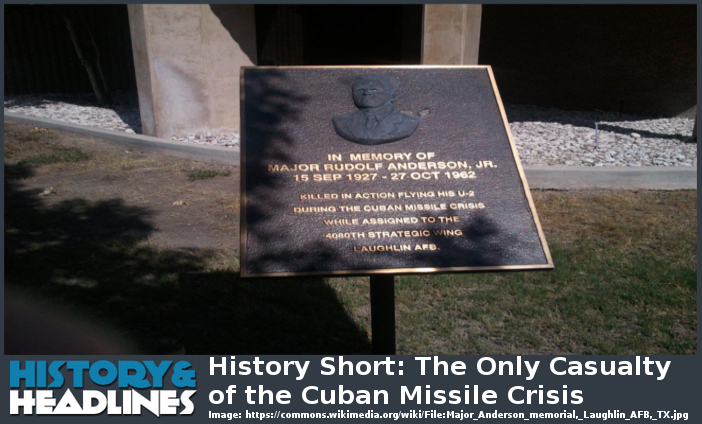A Brief History
On October 27, 1962, US Air Force Major Rudolf Anderson was shot down and killed while flying his U-2 spy plane over Cuba.
Digging Deeper
The Cuban Missile Crisis of October 1962 was a face-off between the US and the USSR over the Soviets stationing nuclear missiles in Cuba, close to the American mainland. After two weeks of negotiations and nearly causing a nuclear war, national leaders reached a deal where the Soviets would remove nukes from Cuba and the US would remove nuclear missiles from Turkey and possibly Italy.
Despite debate about taking drastic military action and nearly disastrous confrontations between US and Soviet forces, the crisis was resolved in a mutually agreeable manner, not the victory for the US portrayed by the American government and press.
Anderson’s U-2 was shot down by a Soviet SA-2 missile at high altitude, probably over 60,000 feet high. Other U-2 flights over Cuba were untouched by missiles.
Question for students (and subscribers): Who do you think “won” the Cuban Missile Crisis? Please let us know in the comments section below this article.
If you liked this article and would like to receive notification of new articles, please feel welcome to subscribe to History and Headlines by liking us on Facebook and becoming one of our patrons!
Your readership is much appreciated!
Historical Evidence
For more information, please see…
Carradice, Phil. The Cuban Missile Crisis: Thirteen Days on an Atomic Knife Edge, October 1962. Pen and Sword Military, 2017.
Dabrowski, Krzysztof. Hunt for the U-2: Interceptions of Lockheed U-2 Reconnaissance Aircraft over the USSR, Cuba and People’s Republic of China, 1959-1968. Helion and Company, 2020.
The featured image in this article, a photograph by Ccassler of Major Rudolf Anderson’s memorial at Laughlin AFB, TX, is licensed under the Creative Commons Attribution-Share Alike 3.0 Unported license.
You can also watch video versions of this article on YouTube.


